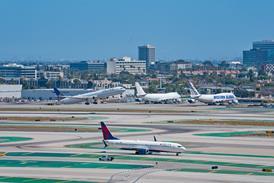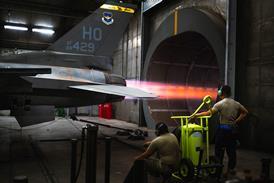Ramon Lopez/WASHINGTON DC
The US Federal Aviation Administration says all indicators suggest the US airline and general aviation sectors will enjoy sustained growth, despite an economic slowdown, a turbulent stock market, strike threats and fears over a recession. The FAA says traffic and enplanements will show reasonable growth this year, with that growth slowing marginally in 2002 before accelerating again for the rest of the decade.
The administration predicts that over the period to 2012, domestic traffic in revenue passenger miles (RPMs) will increase at an average annual rate of 4.2%, with passenger boardings rising by 3.6% annually, from 659 million last year to 1 billion in 2012. Domestic RPMs and enplanements are expected to grow by 3.9% and 3.3% respectively this year, and by 3.6% and 3% next. A rebound from 2003 will then see RPMs and boardings average 4.3% and 3.7% over the rest of the period.
International traffic is forecast to grow faster than domestic traffic, with continued strong growth also envisaged in the cargo and regional sectors - with the latter touted as "the fastest growing segment of the industry over the next several years." The US regional jet fleet is set to rise from 569 last year to 2,190 by 2012, the report says.
FAA optimism follows what it describes as "a time of unprecedented growth" in the seven years since 1993, when the industry began to pull out of the slump which followed the Gulf War of 1991. Its economists nevertheless caution that forecasting is not an exact science, as evidenced by their prediction of a drop in fuel prices before the end of last year that failed to materialise.
The FAA's director of aviation policy and planning, John Rodgers, remains confident there will be "some weakening" in fuel prices, adding: "I know that it has to happen, but I don't know when." With fuel prices rising 48% last year - causing costs across the industry to leap by 10% - an average growth in sales of 8% was swallowed up, so most major US carriers reported net profits below 1999's figures.
All but two of the top 15 carriers reported positive earnings, but operating profits fell $1.1 billion from 1999 to $7.6 billion, while net profits plunged $1.7 billion to $3.6 billion. Regional carriers posted operating profits of $546 million, a fall of $162 million.
Even if fuel prices fall, the threat of industrial action remains. Strikes loom at several US carriers, and the FAA says that even if they are averted, "the price of peace is growing and could lead to significantly higher labour costs". This could translate into higher fares - and lower demand for air travel.
Source: Flight International























